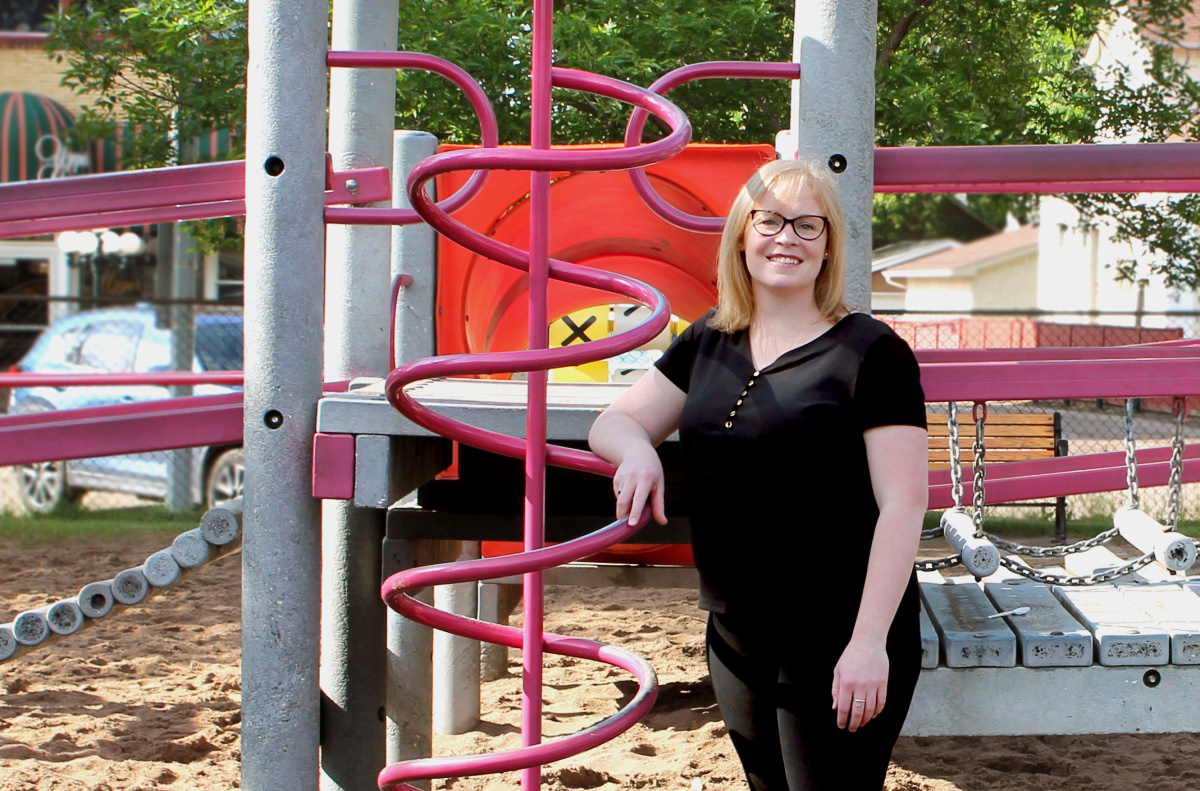Inclusion fostered in the classroom doesn’t have to end once physical education kicks off, at least if you take Hayley Morrison’s advice.
The Elementary Education professor focuses her research and teaching practice on supporting inclusion in physical education. The goal is for students of all abilities to be able to partake in activities. In Morrison’s experience, a student’s physicality or neurodiversity shouldn’t be a barrier to their participation.
“Inclusion means we are supporting the whole child,” explains Morrison.
“I know how important movement is to my own life, but we as teachers sometimes forget how important it is for our students as well. It impacts social dynamics and builds friendships, as well as teaches about teamwork and fairplay.”
Morrison recognizes that making learning environments more accessible takes some self-reflection by the educator, an often-uncomfortable task for anyone.
“For a lot of people, this concept of ableism is not necessarily an intentional thing,” says Morrison. “We just don’t understand our own ableism and what we can do compared to what someone else might be able to do. We’re all different. We have to recognize that and not make assumptions.”
Learning Inclusion
It was a summer job that first exposed Morrison the power and possibility of inclusion. While she was in her undergraduate degree, she worked with an adaptive physical education program for youth with autism. The experience made her realize different ways to make inclusion possible.
When she started her teaching career in Ontario schools, Morrison saw that inclusion wasn’t happening in physical education classes in particular. She acknowledges that it wasn’t an easy task, but found she was able to implement inclusive practices where her colleagues had more difficulty. Wondering why sparked an academic career studying why inclusion wasn’t happening, and how to help educators better include all of their students.
Morrison recognizes it takes a lot of learning on the part of the educator, but says that it is worth it.
“Not everyone in their day-to-day lives is challenged by working with someone who doesn’t communicate in the same way as we might or do the same things we can do,” says Morrison.
“Because we don’t experience it, we don’t necessarily understand it. It’s okay if you don’t experience life the same way, but are you open and willing to do things differently? The way you do it might not be the only way or the ‘right’ way.”
Five ways to be more inclusive in teaching
Take risks and try a new activity you’ve never tried before
“Instead of worrying about ‘what do my students have,’ it’s about taking the time to get to know your students, try out new things and experience the diversity in the classroom so you can create a better educational program for each one of those kids.”
Tap into your students’ interests—all of them
“Do an interest inventory to find out what they like and then take 30 days to try them out. It can be a lot of work, but that’s what teaching is all about—showing that you value your students.”
Work with your support staff
“Ask educational assistants for their advice and ideas. Once teachers and EAs started talking to one another they realized how to help each other with inclusion.”
Get outside!
“Don’t forget about the outdoors. It is part of the curriculum and it is inclusive.”
Do a new activity for yourself
“When we as teachers put ourselves in uncomfortable situations, we can see how some situations we create might be uncomfortable for our students. Until we challenge ourselves, I don’t think we can be truly inclusive.”
